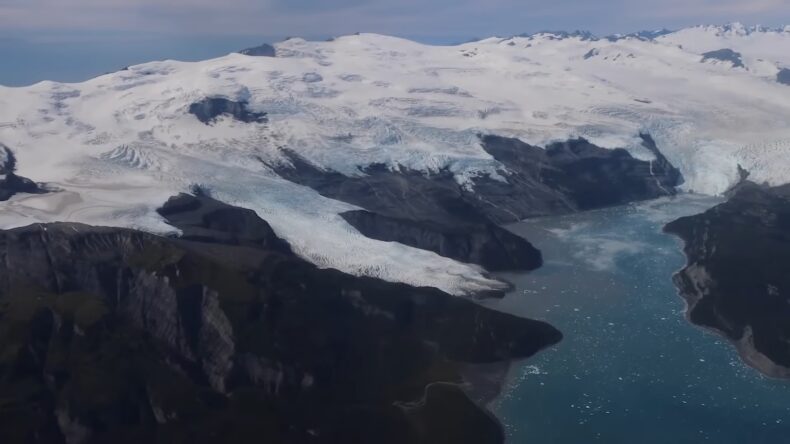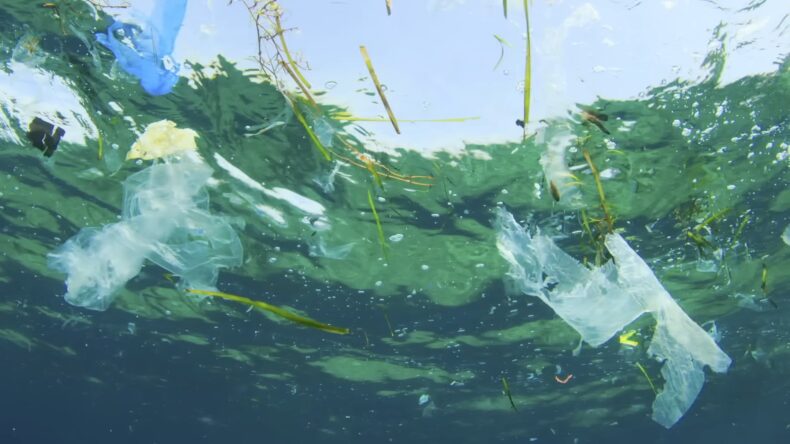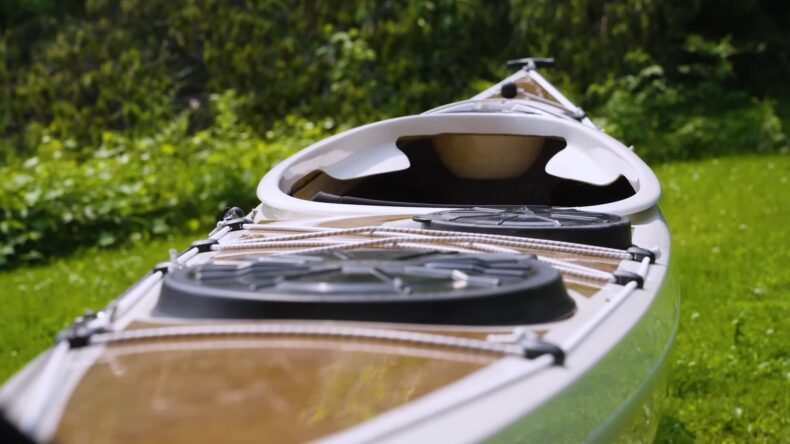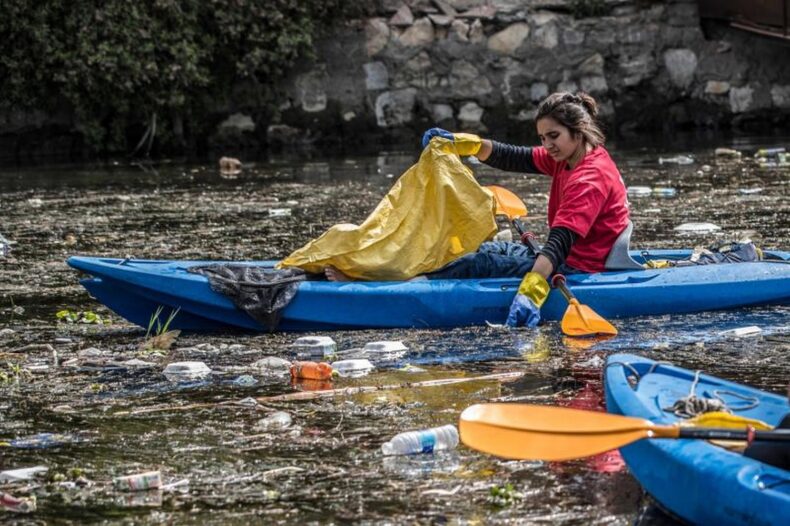I was paddling down a river recently, the sun glistening on the water, the rhythmic sound of my paddle breaking the surface. But while gliding along it struck me just how much water levels are lower than usual, and the once vibrant aquatic life seems sparse.
This isn’t just a one-off; it’s a glimpse into the future if we don’t address climate change. And rivers, are just one aspect of our environment impacted, albeit facing the brunt of our changing climate. From dangerous floods threatening communities to droughts putting livelihoods at risk, our waterways are the frontline of this global crisis.
Table of Contents
Outdoor Enthusiasts in Climate Action
As kayakers, we have a unique connection to water. We see firsthand the beauty of our rivers and lakes and the threats they face.
But we should see ourselves as more than witnesses; we’re also stewards. Our love for nature gives us a responsibility to protect these precious ecosystems and fight for a sustainable future.
The Intersection of Kayaking and Climate Change
The Vulnerability of Water Bodies

Temperature Rise: Warmer temperatures don’t just mean a hotter summer day; they have profound impacts on our water ecosystems. Elevated water temperatures can lead to lethal conditions for aquatic species. And it’s not just about the fish; warmer waters can cause toxic algae outbreaks, contaminating our water supply and posing health risks to both humans and animals.
Rising Sea Levels: For those of us who love coastal paddling, rising sea levels are a looming concern. Not only does it reshape our favorite paddling spots, but it also threatens coastal habitats and communities. As sea levels rise, we might find some of our beloved kayaking locations becoming inaccessible or drastically altered.
Pollution and Water Quality

Plastic Pollution: We’ve all seen it – a plastic bottle floating by or a discarded bag tangled in the reeds. Plastic pollution is not just an eyesore; it’s a threat to our waterways’ health and the creatures that call them home. As kayakers, we’re in a prime position to witness the extent of this issue.
Chemical Runoff: After heavy rain, have you ever noticed the water looking a bit murkier? That’s often due to stormwater runoff, which can carry pollutants from roads, farms, and urban areas into our rivers and lakes. This polluted runoff can harm aquatic life and degrade water quality, making our paddling experiences less enjoyable and more risky.
Steps Kayakers Can Take
Minimizing Carbon Footprint

Choosing Eco-Friendly Gear: Next time you’re in the market for new gear, consider going green! Many companies now offer eco-friendly kayaking equipment, from paddles made of sustainable materials to biodegradable accessories. Making this switch not only reduces your carbon footprint but also supports businesses that prioritize our planet.
Reducing Transportation Emissions: Carpooling to your next kayaking adventure or choosing paddling spots closer to home can significantly reduce transportation emissions. Plus, it’s a great way to bond with fellow kayakers and discover hidden gems in your local area!
Advocacy and Education
Raising Awareness: We’re a community, and there’s power in numbers. By sharing information about climate change and its impact on our favorite waterways, we can inspire more kayakers to take action. Whether it’s through social media, local clubs, or just chatting with a friend on a paddling trip, every conversation counts.
Supporting Climate-Focused Organizations: Organizations like American Rivers are at the forefront of protecting our waterways and combating climate change. By supporting their efforts, either through donations or volunteering, we can amplify our impact and ensure a brighter future for our rivers.
Clean-Up Initiatives

Organizing Waterway Clean-Up Events: Why not turn your next kayaking trip into a clean-up event? Gather some friends, grab some trash bags, and make a day of it! Not only will you be helping the environment, but you’ll also feel a deep sense of accomplishment as you paddle through cleaner waters.
Proper Disposal of Waste: Remember, what we bring in, we must take out. Always pack out your trash and ensure you’re disposing of waste properly. It’s a small step that makes a big difference.
Sustainable Kayaking Practices
Leave No Trace Principles
Campsite Etiquette: When setting up camp after a long day of paddling, it’s essential to be mindful of our surroundings. Always camp on existing trails and campsites. If you’re off the beaten path, choose durable surfaces like rock, sand, or dry grass. Remember, a good campsite is found, not made. And always keep a distance from water sources to protect shorelines.
Waste Disposal: We’ve all heard the saying, “Pack it in, pack it out.” But it’s more than just a catchy phrase; it’s a responsibility. Ensure you bring back all the waste you carried in. And when nature calls, deposit human waste in a hole dug at least 60 meters away from water sources, trails, and campsites. And if you’re washing dishes or taking a quick bath, do it away from waterways and use biodegradable soap sparingly.
Engaging with Local Communities
Building Partnerships
Collaborating with Environmental Groups: As kayakers, we have a unique perspective on the health of our waterways. Partnering with environmental groups can amplify our efforts to protect these precious resources. By sharing our observations and experiences, we can provide valuable insights and support their conservation initiatives.
Involving Local Schools and Youth: The future of our planet lies in the hands of the next generation. Engaging with local schools and youth groups can inspire young minds to become stewards of the environment. Organize kayaking trips, teach them about the Leave No Trace principles, and share the joys of paddling while emphasizing the importance of sustainable practices.
Promoting Sustainable Tourism
Supporting Local Businesses: When planning your next kayaking adventure, consider supporting local businesses. Whether it’s renting equipment, buying supplies, or dining out, choosing local not only boosts the community’s economy but also reduces the carbon footprint associated with transporting goods long distances.
Encouraging Responsible Tourism Practices: As we explore new places, it’s crucial to respect the environment and local communities. Advocate for responsible tourism practices among fellow kayakers. This includes minimizing waste, respecting local customs and traditions, and avoiding sensitive areas during breeding or nesting seasons.
Personal Lifestyle Choices
Reducing Plastic Consumption
Using Reusable Bottles and Containers: Single-use plastics are a significant threat to our waterways. As kayakers, we can lead by example by using reusable water bottles and containers. Not only does this reduce plastic waste, but it also ensures we’re drinking clean, safe water during our trips.
Single-Use Plastics: Beyond water bottles, consider all the other single-use plastics you might bring on a trip. Can they be replaced with sustainable alternatives? From reusable snack bags to beeswax wraps, there are plenty of eco-friendly options available.
Energy Efficiency
Sustainable Transportation Options: While kayaking is a low-impact activity, getting to our launch points often involves driving. Consider carpooling with fellow paddlers, using public transportation, or even biking to reduce your carbon footprint.
Home Energy Consumption: Our fight against climate change isn’t limited to our time on the water. At home, simple changes like switching to energy-efficient appliances, using LED bulbs, and unplugging devices when not in use can make a significant difference.
FAQ
Why is kayaking uniquely positioned to address climate change?
Kayaking offers a direct connection to water ecosystems, making kayakers firsthand witnesses to the impacts of climate change on these environments. This intimate relationship with nature fosters a sense of responsibility and urgency to act. Moreover, the kayaking community, being passionate about the outdoors, can serve as influential advocates for environmental protection and sustainable practices.
How can I get involved in waterway clean-up events if I’m new to kayaking?
Many local environmental and kayaking groups organize clean-up events that welcome both seasoned kayakers and beginners. Joining a local kayaking club or following environmental organizations on social media can keep you informed about upcoming events. Additionally, consider starting your own clean-up initiative with friends or family – every effort counts!
Are there certifications or courses I can take to become a more eco-conscious kayaker?
Absolutely! There are several organizations that offer courses on Leave No Trace principles, sustainable outdoor recreation, and wildlife protection. These courses not only enhance your kayaking experience but also equip you with the knowledge to minimize your environmental impact and educate others.
What are some eco-friendly kayaking gear brands?
The market for sustainable outdoor gear is growing rapidly. Brands like Eddyline, Aqua-Bound, and NRS have made commitments to sustainability, offering products made from recycled materials or adopting eco-friendly manufacturing processes. Always research and support brands that prioritize the environment.
Conclusion
Our planet’s health is intricately tied to our actions, both big and small. As kayakers, we’re granted a unique perspective on the beauty of our waterways and the threats they face.
By embracing sustainable practices, engaging with communities, and making informed choices, we can paddle towards a future where our waters remain pristine and our planet thrives. Let’s not just ride the waves of change but be the force that drives them.

